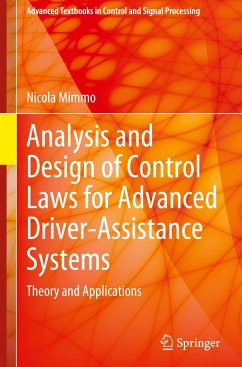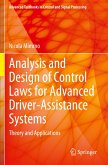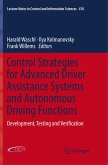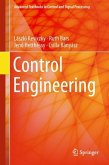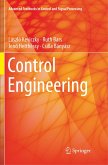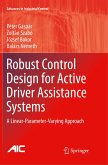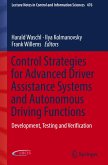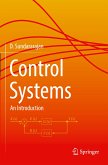Analysis and Design of Control Laws for Advanced Driver-Assistance Systems (ADAS) teaches students how to solve classical problems in automotive control in a step-by-step fashion. It begins by motivating the use of ADAS and then explains different ADAS models and the goals of their control systems. Systems analysis and control architectures are presented, followed by a treatment of the use of optimal control and the Kalman filter. The author then presents more advanced control techniques and gives an overview of control problems involved in fully autonomous, hybrid and electric vehicles.
Each chapter contains a specific discussion of its subject in terms of various ADAS functionalities, such as active suspension, power steering, lane control and automated parking. The text is developed by extensive use of worked examples, related to the applications discussed. Appendices, including necessary aspects of linear algebra and the use of MATLAB render the text self-contained.MATLABfiles are provided to help both student and instructor model and analyse the systems being discussed. An electronic solutions manual is freely available for download by instructors adopting the book for their classroom teaching.
This textbook will help final-year undergraduate and graduate students to understand the practical issues they will face when working on automotive systems in the real world and the theoretical underpinnings they will need to get to grips with the control systems of present and future generations of cars and other automotive transport. A basic grounding in mathematics and physics is all that is required to get the most from this text.
Each chapter contains a specific discussion of its subject in terms of various ADAS functionalities, such as active suspension, power steering, lane control and automated parking. The text is developed by extensive use of worked examples, related to the applications discussed. Appendices, including necessary aspects of linear algebra and the use of MATLAB render the text self-contained.MATLABfiles are provided to help both student and instructor model and analyse the systems being discussed. An electronic solutions manual is freely available for download by instructors adopting the book for their classroom teaching.
This textbook will help final-year undergraduate and graduate students to understand the practical issues they will face when working on automotive systems in the real world and the theoretical underpinnings they will need to get to grips with the control systems of present and future generations of cars and other automotive transport. A basic grounding in mathematics and physics is all that is required to get the most from this text.

